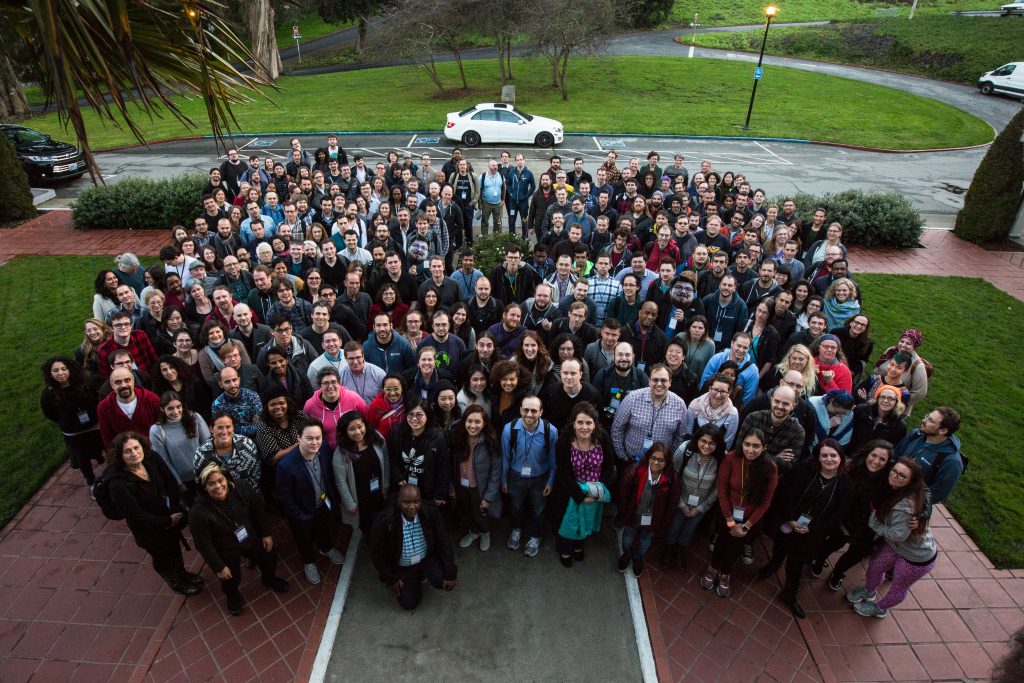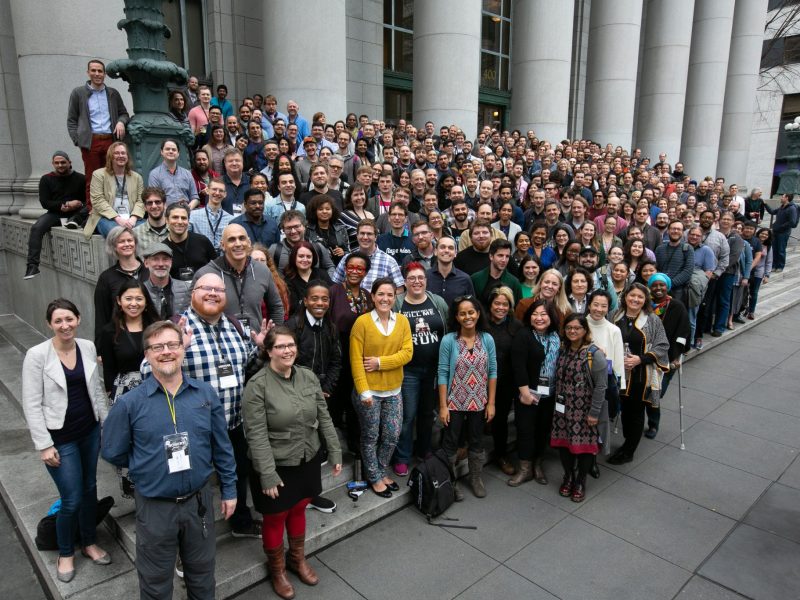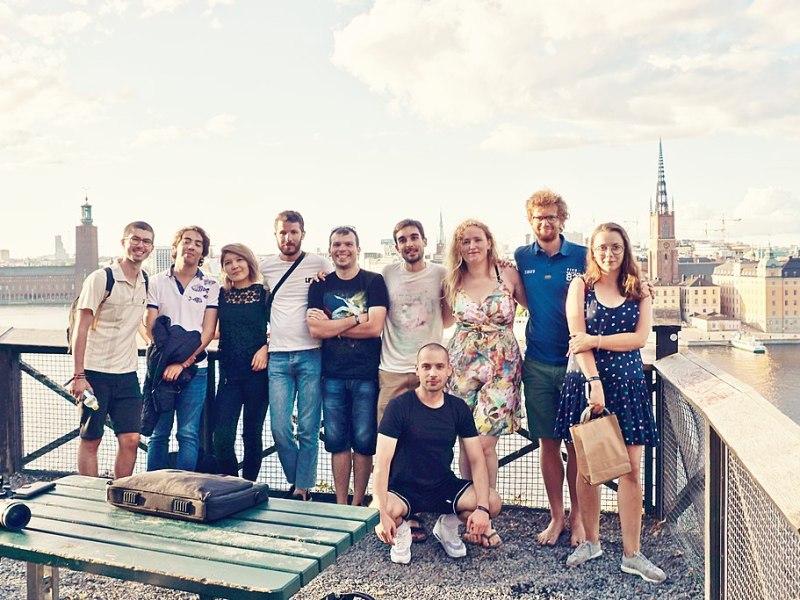The Wikimedia vision is a world in which every single person can freely share in the sum of all knowledge. We believe knowledge belongs to everyone, and that people from diverse backgrounds should be empowered to participate in the collaborative creation of knowledge. While we often discuss diversity and inclusion in the context of the Wikipedia volunteer community and the Wikimedia movement at large, the Wikimedia Foundation, the U.S.-based non-profit organization that supports this movement, is making a concerted effort on these issues within the Foundation employees in the United States. As a movement, we are also focused on these issues with respect to Wikimedia professionals around the globe.
As part of this work, we are committed to transparency and sharing what we learn along the way. That’s why the Wikimedia Foundation is publicly sharing our employee diversity data from our most recent Equal Employment Opportunity Report (EEO-1 Report) covering United States employees for the calendar year of 2017. We are also sharing hiring data for the last three of the Foundation’s fiscal years (July 1 – June 30) for both employees and contractors, including professionals based outside of the U.S.
This data provides a glimpse into who is employed by the Foundation in the United States based on race/ethnicity, gender, and job category, as well as our hiring trends for the last three fiscal years. The results are encouraging, while reminding us that there is still a long way to go towards building a more diverse workforce, both with regard those employed by the Foundation and for workers outside of the United States. But it’s not just about the numbers—we believe our most critical work is fostering an inclusive culture. That means living our values, one of which is “We welcome and cherish our differences,” so that people from all backgrounds feel a sense of belonging at the organization and newcomers from diverse backgrounds feel welcome. Diversity won’t be a success if the people we hire don’t feel a sense of belonging in the organization.
Our work toward diversity and inclusion is a journey, not a destination. As part of this journey, the data serves as a piece of the puzzle in our work moving forward. We invite anyone who is interested to take a look and to share your thoughts.
Diversity data for U.S. employees
The EEO-1 report is a U.S.-government mandated survey requiring organizations based in the United States to categorize employment data by race/ethnicity, gender and job category.* The Foundation’s most current EEO-1 report relates to calendar year 2017.
Overall, the latest data reflects some encouraging progress we have achieved by leading with our values, rather than simply setting hiring targets. Over the course of the just-completed 2017-18 fiscal year, 65% of new employee hires in the U.S. were women and 43% of new hires were Black/African American, Hispanic/Latino or Asian. Roughly 41% of new employee hires in technical roles over this time period were women, a significant increase over our overall percentage of women employees in technical roles, which is currently 29%.
At the same time, we have much more work to do, as the graphs below show. Overall, only 6% of employees in the United States are Black/African American, 7% are Hispanic/Latino, 12% are Asian, and 4% are two or more races. While 78% of our top executives identify as women (far better than industry averages), roughly 89% of the Foundation executive team identifies as white.
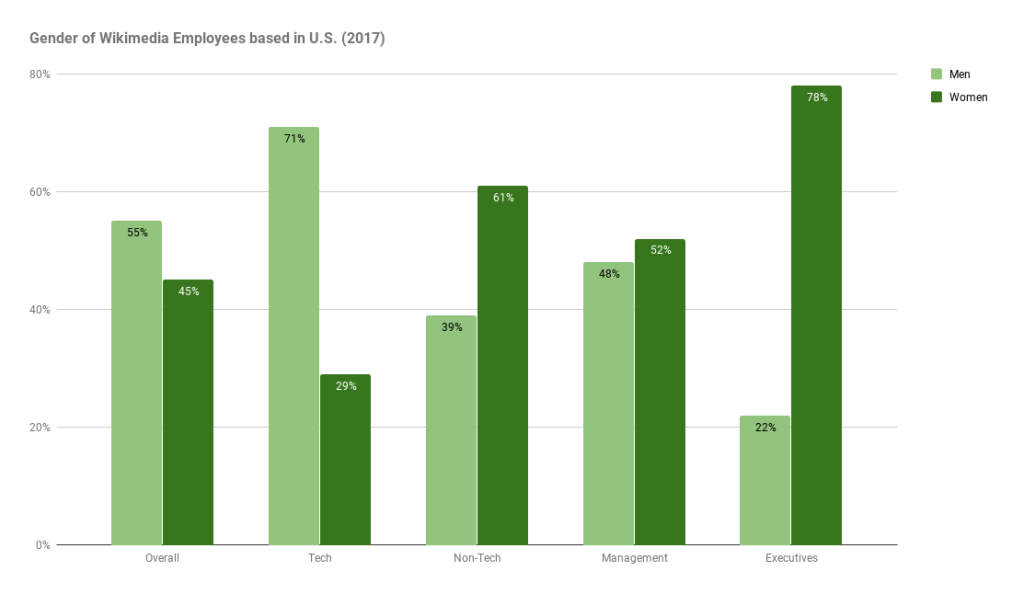
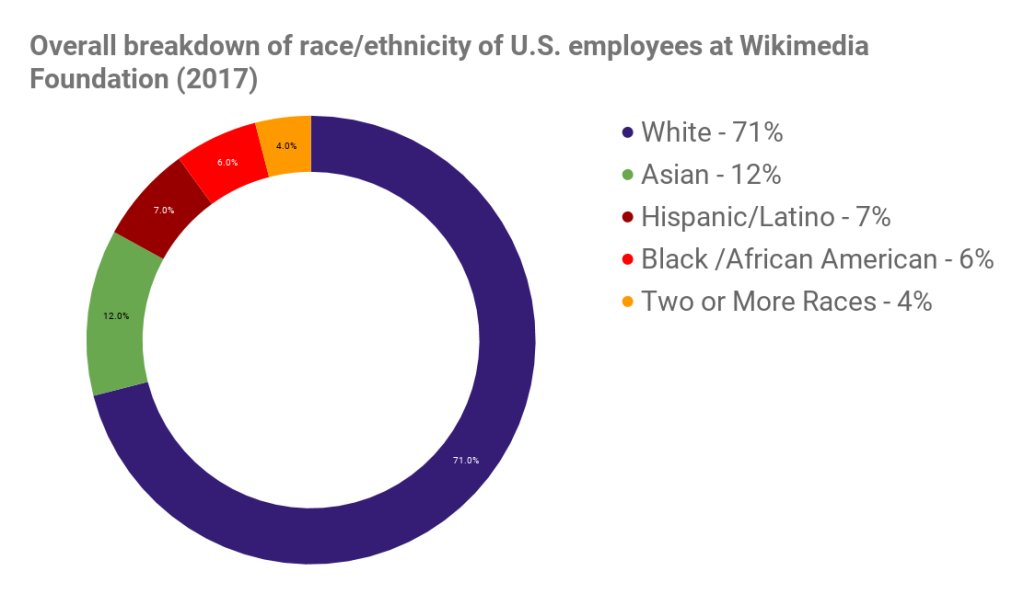
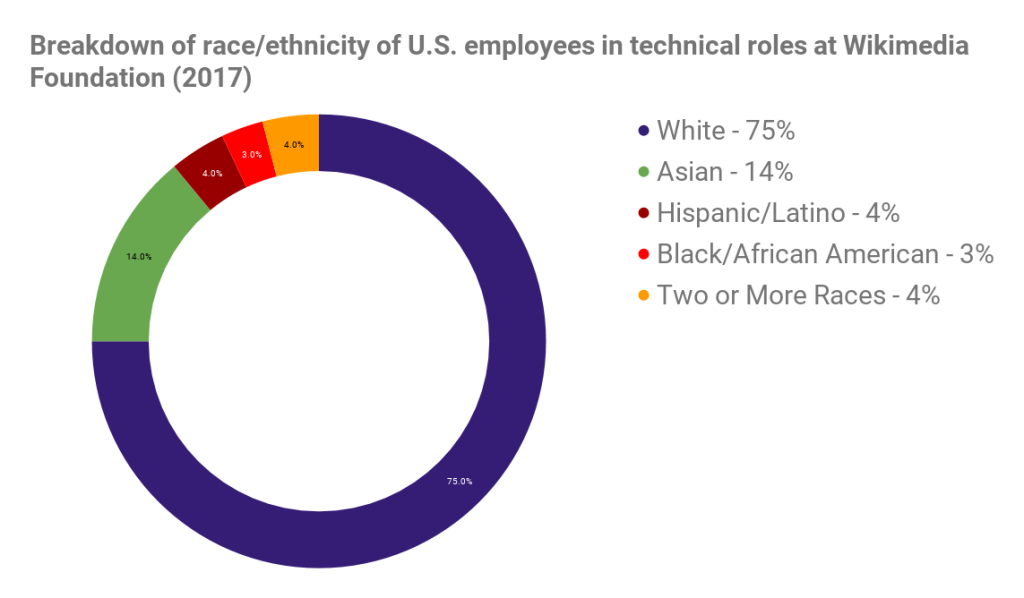
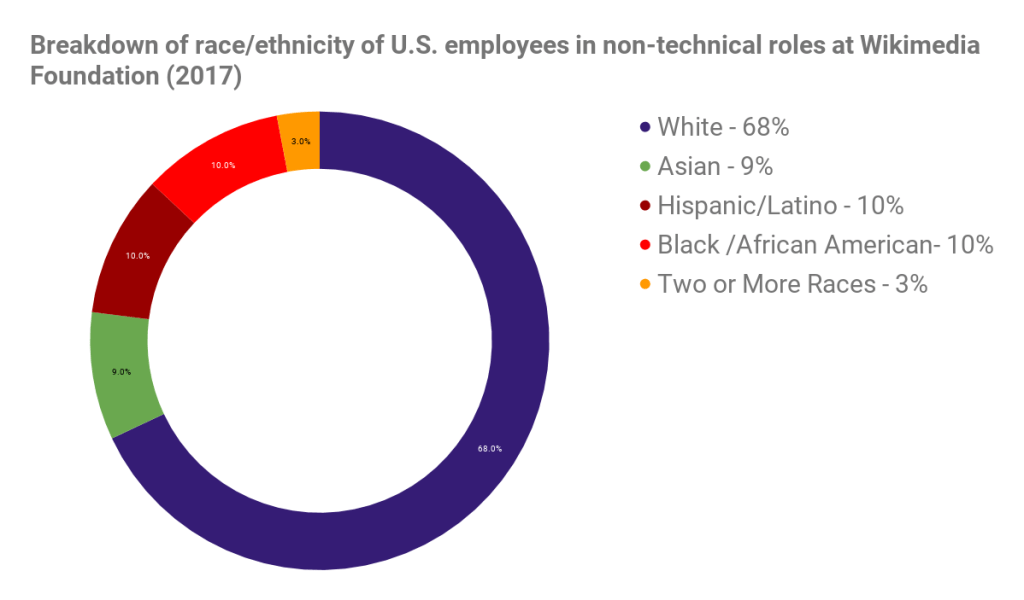
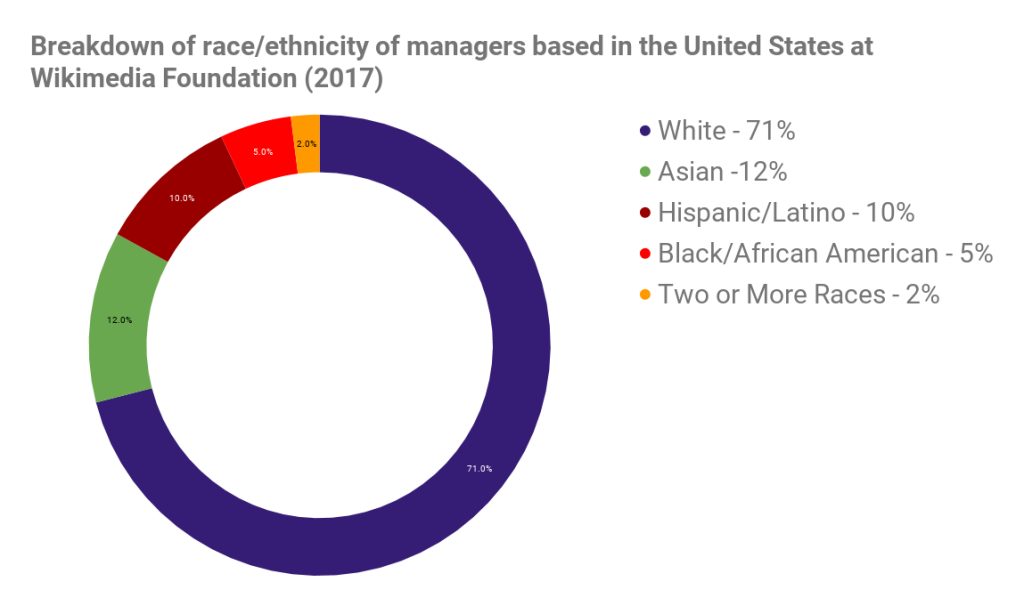
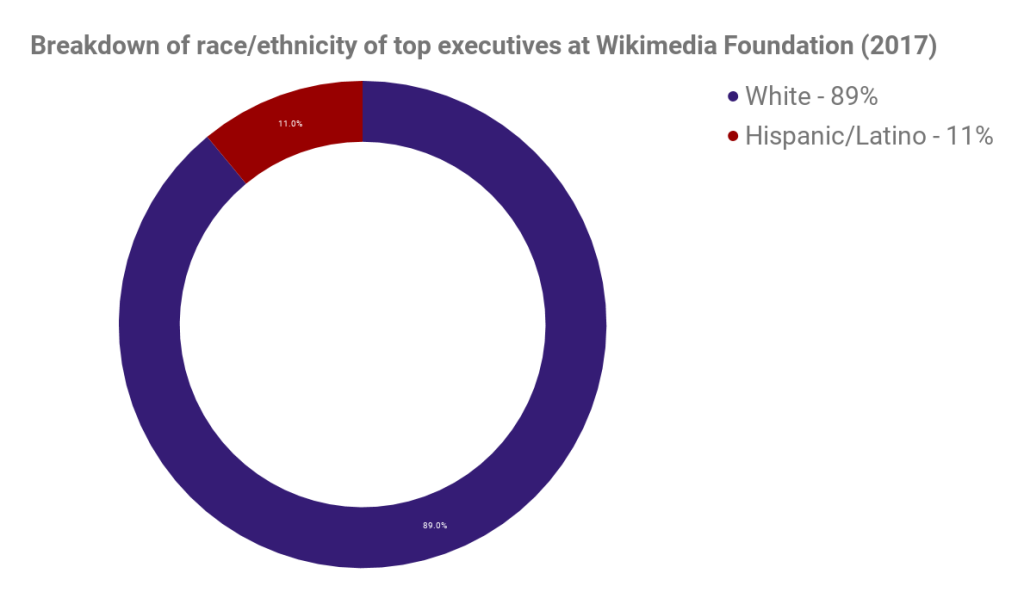
A global view on gender diversity in hiring
While the Wikimedia Foundation is headquartered in the U.S., our mission is global. We would like to share information on the progress of diversity of Wikimedia professionals who are contractors outside of the United States, especially in terms of gender. The following graph reflects increases in the overall hiring of women worldwide, including, as noted, employees and contractors outside of the United States. Race and ethnicity information is not included as collecting such information is not permitted in many countries.
The graph below includes the last three fiscal years. Here too, there have been concerted efforts to lead with Wikimedia values, and to welcome and cherish differences—and it’s showing in the numbers. For example, 58% of new hires in the 2017-18 fiscal year were women, up from 41% in 2015-16.
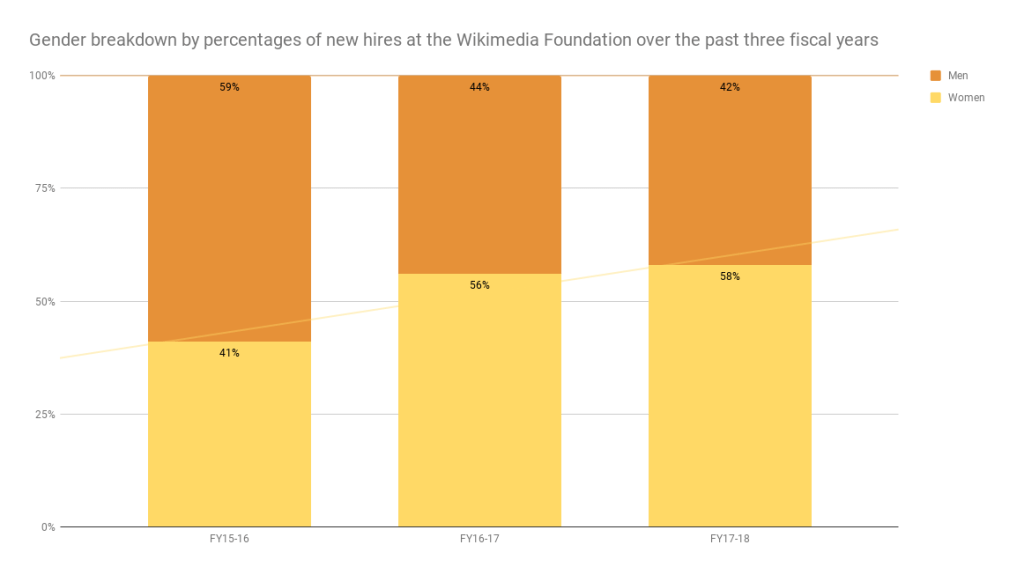
What we’ve been doing and where we’re going
Beginning in 2016, the Wikimedia Foundation set out to focus on inclusion, emphasizing the need for a culture of belonging that will welcome newcomers from all backgrounds and create an environment where everyone can thrive. For years, this has been implied in our vision statement, but over the last two years we have made some deliberate efforts to make this explicit and ensure that we track our progress towards becoming a more inclusive organization. Our work to date has included, among other things, supporting staff-led employee resource groups, creating a Diversity Alliance for all staff who support diversity and inclusion at the Foundation, conducting workshops on ally skills in the workplace, providing a series of trainings for staff (including specific workshops for executives), and collaboratively drafting a set of organizational values.
In doing this work, we must listen and seek out perspectives that do not represent the majority. By listening to the voices we don’t often hear, we’re receiving a very clear message: We have made progress but we have more work to do.
As we look ahead, we aim to improve the experience for everyone by creating a culture of belonging and a welcoming environment for newcomers from diverse backgrounds. We’ll work to ensure that consistency, transparency, and objectivity are embedded in all parts of the employee lifecycle, whether that be in recruitment, onboarding, development, compensation and promotions. We’ll continue to establish organizational best practices, make sure that information is shared equally, and that we rely on observable facts to support decisions impacting employees. Throughout it all, we’ll be aware of and working to mitigate biases in our processes.
Angel Lewis, People Relations and Inclusion Lead
Wikimedia Foundation
*The EEO-1 survey requires we provide information on Foundation employees based in the United States in each calendar year and does not reflect contractors, whether based in the United States or in other countries. Categories are provided by the government, and self-reported by employees. It is important to note that United States law differs from that of many other countries in terms of personal information that must be reported, based in large part on the culture and history behind the laws that require seeking such information about U.S. employees. In contrast to the United States, many other countries prohibit obtaining or reporting information about race/ethnicity. We believe, however, that the United States data is very useful in helping us assess progress relating to diversity.
